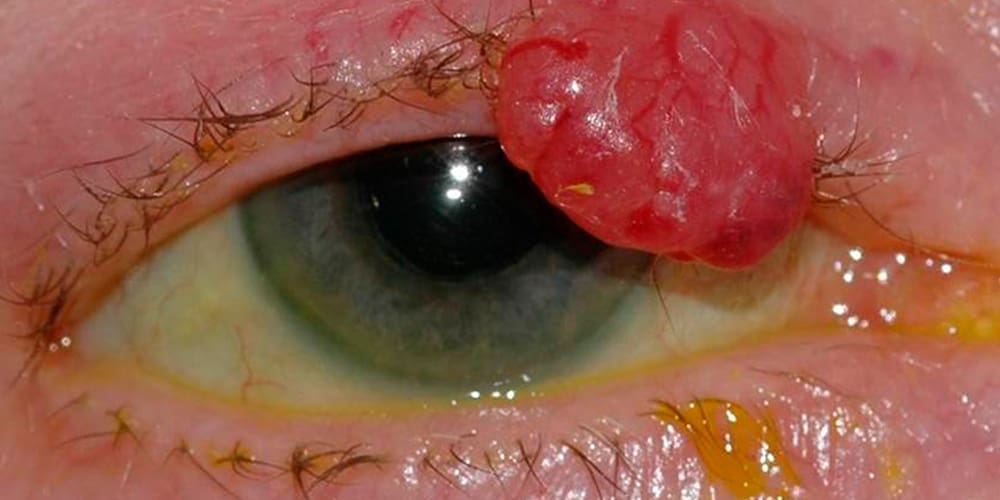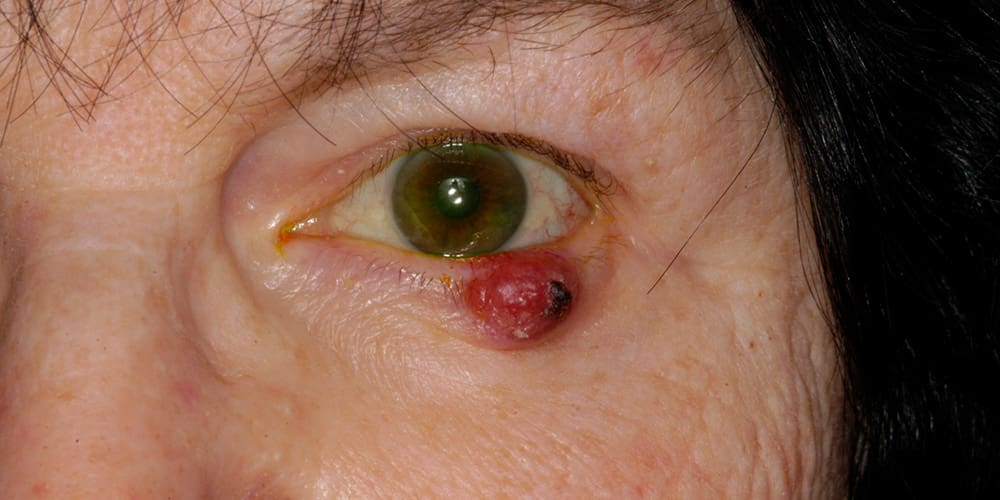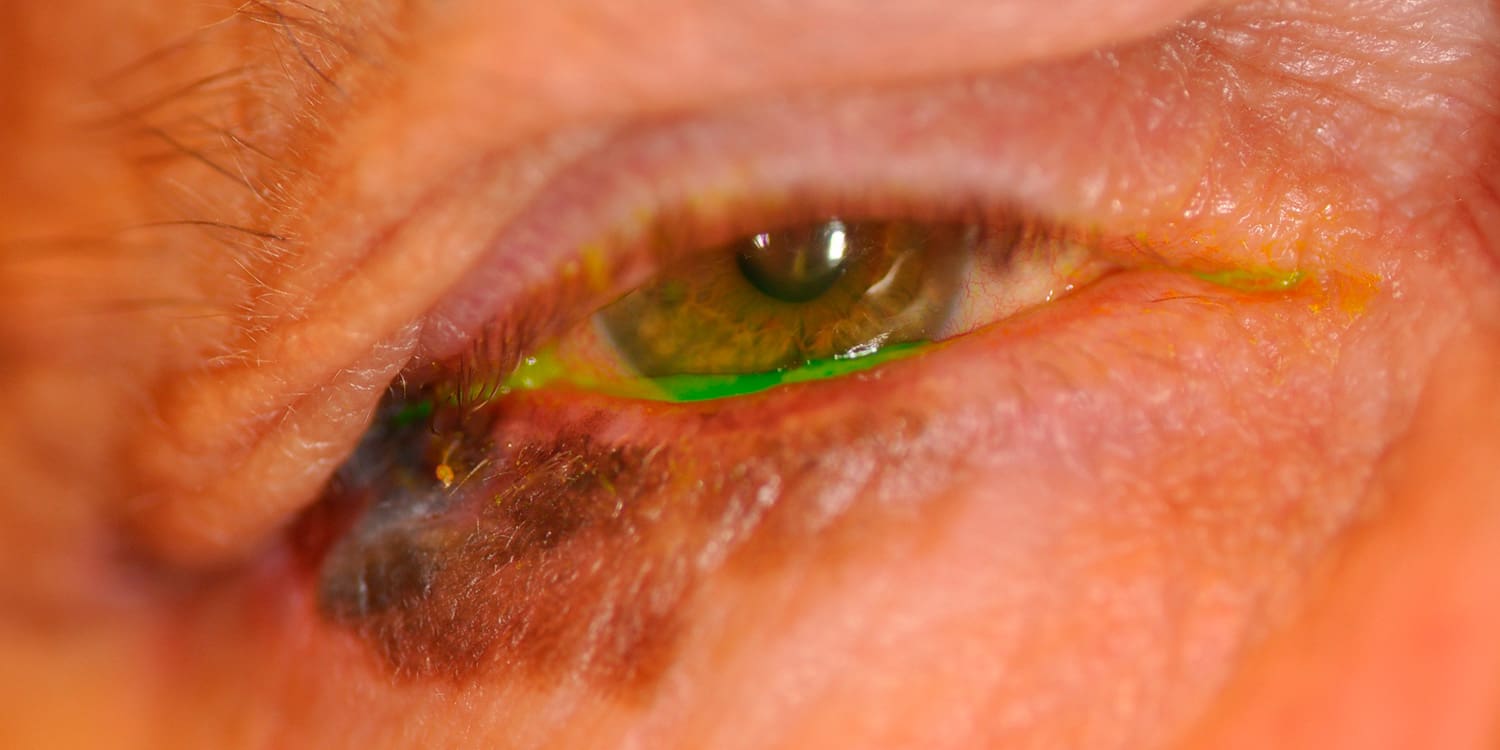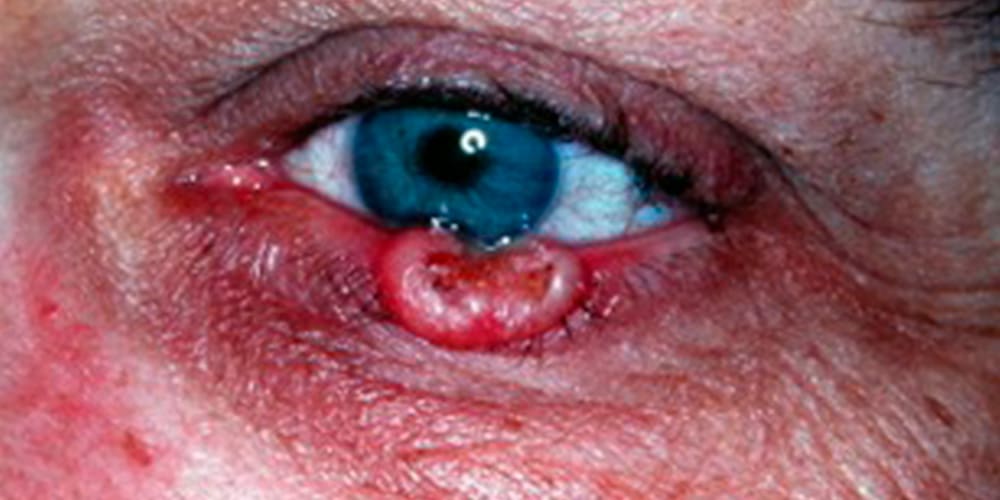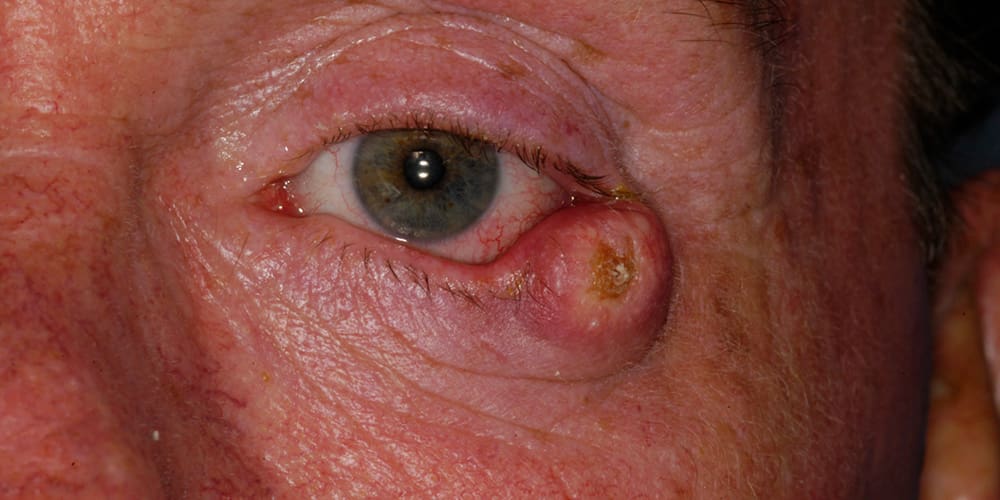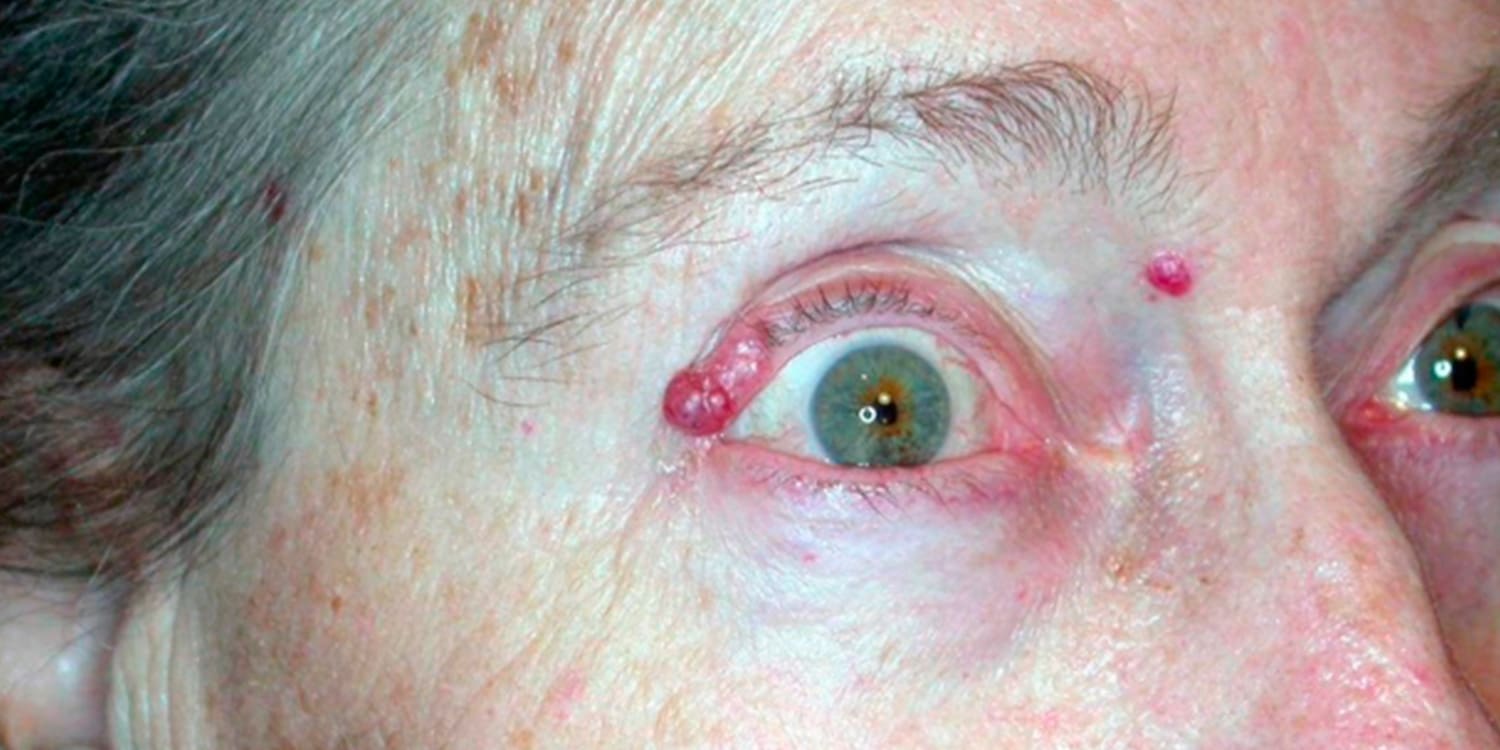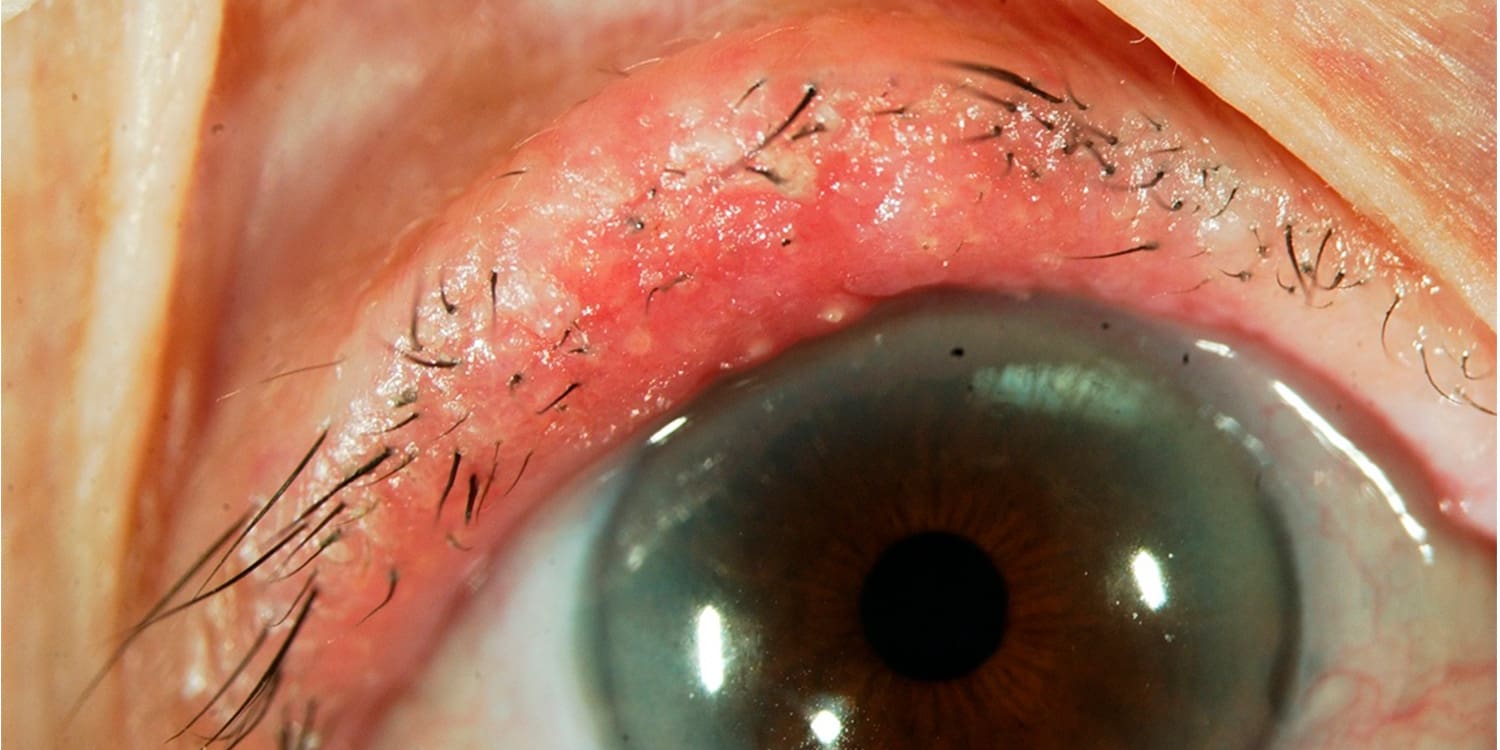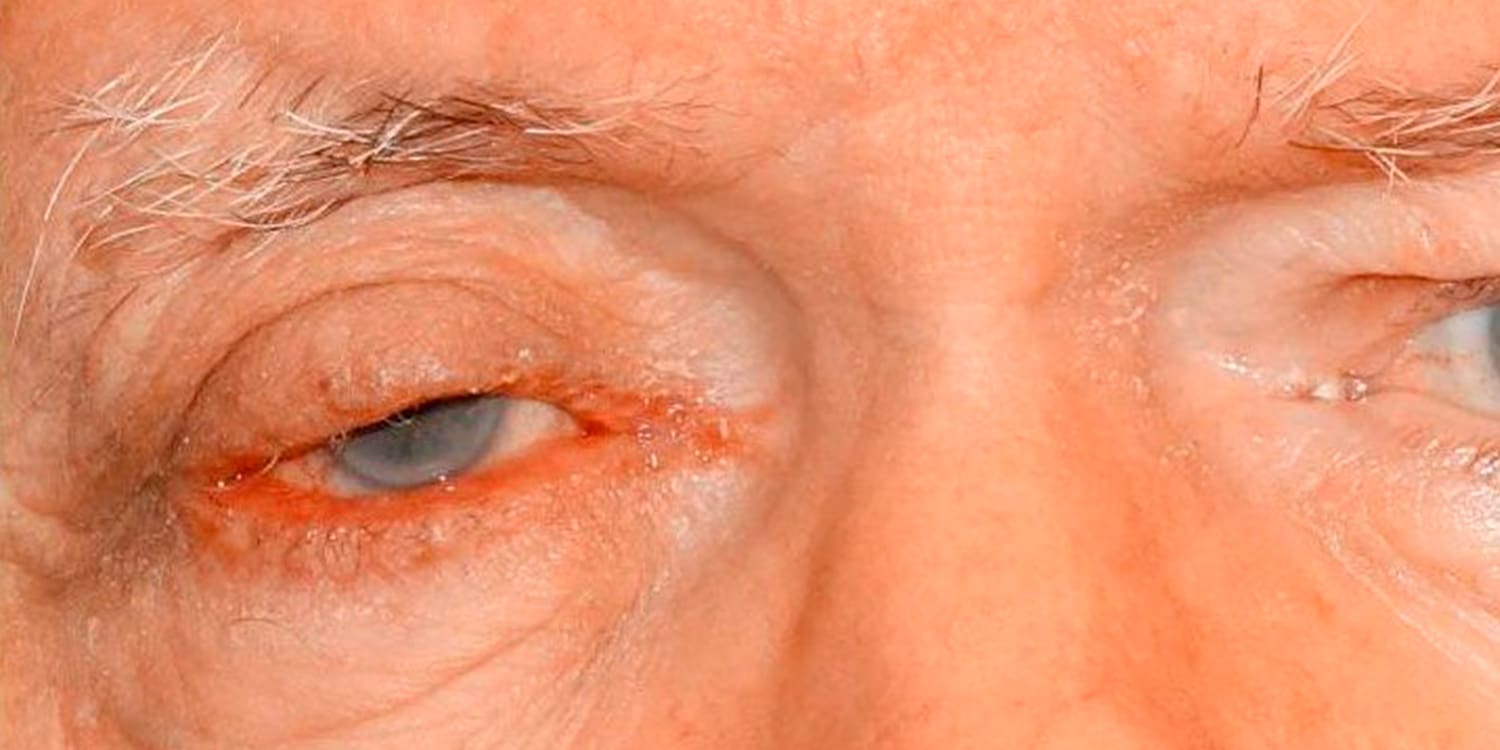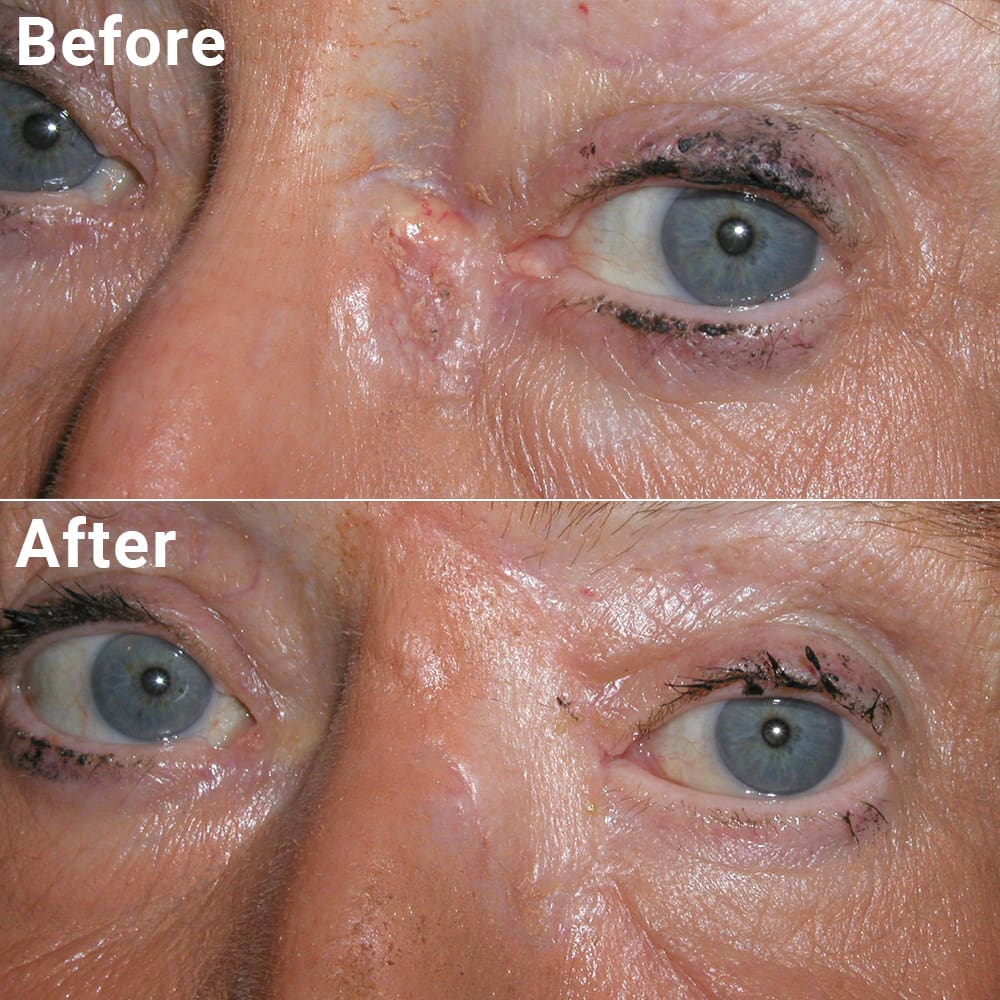Eyelid Skin Cancer and Reconstruction
What Is Eyelid Skin Cancer?
Skin cancer is the most common type of cancer in the United States. The eyelids are a common site, especially for people with light skin and significant sun exposure.
Most eyelid skin cancers are:
• Basal cell carcinoma (most common) – slow growing and usually doesn’t spread
• Squamous cell carcinoma – slightly more aggressive, may spread
• Sebaceous carcinoma – rare, more serious, and can be aggressive
• Melanoma – rare but can be life-threatening if not treated early
Early diagnosis and treatment are important to prevent the cancer from spreading or damaging nearby structures like the eye.
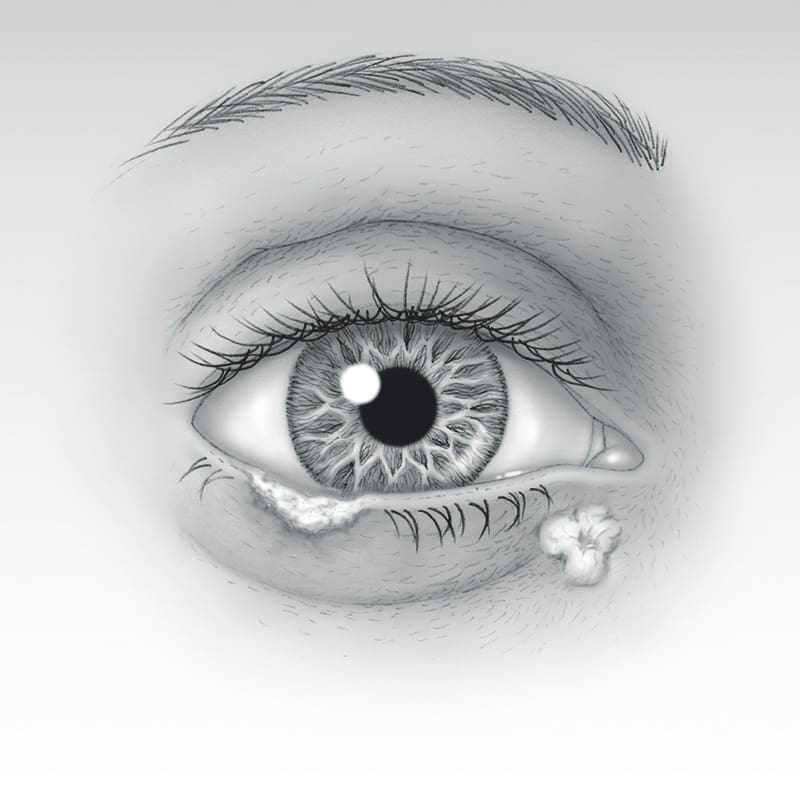
Signs to Watch For
• A lump or bump that doesn’t go away
• Skin changes, including thickening, bleeding, or crusting
• A sore that doesn’t heal
• Loss of eyelashes in one area
• Changes in the shape or position of the eyelid
If you notice any of these signs, see your doctor. A biopsy (a small sample of tissue) may be needed to confirm the diagnosis.
Treatment Options
Surgical Removal
In most cases, the cancer is removed with surgery. The goal is to remove all of the cancer while preserving as much healthy tissue as possible. This is often done in one of two ways:
• Traditional excision: The surgeon removes the cancer and a small border of normal skin. The tissue is then examined in a lab to confirm all cancer was removed.
• Mohs surgery: A skin cancer specialist removes the cancer in very thin layers and examines each layer under a microscope during the procedure. This allows for the most precise removal and is especially useful in delicate areas like the eyelid.
Your oculofacial plastic surgeon will often perform the reconstruction after the cancer is removed.
Reconstruction After Cancer Removal
Depending on the size and location of the tumor, reconstruction may be simple (like closing the wound with stitches) or more complex (like using nearby tissue or skin grafts to rebuild the eyelid). The goal is to:
• Protect the eye
• Preserve or restore eyelid function
• Achieve the best possible cosmetic result
Your surgeon will explain your options and what to expect during healing.
Risks and Follow-Up
As with any surgery, risks include:
• Bruising and swelling
• Infection or bleeding (rare)
• Eyelid shape or position changes
• Need for additional surgery
You’ll need regular follow-up visits to check for any signs the cancer has returned. Most eyelid skin cancers are successfully treated with surgery and do not come back if caught early.
Summary
Eyelid skin cancer is common and usually treatable. Early detection and expert surgical care can protect your vision, restore comfort, and provide excellent cosmetic outcomes. Your oculofacial plastic surgeon will guide you through every step — from diagnosis to reconstruction and recovery.
